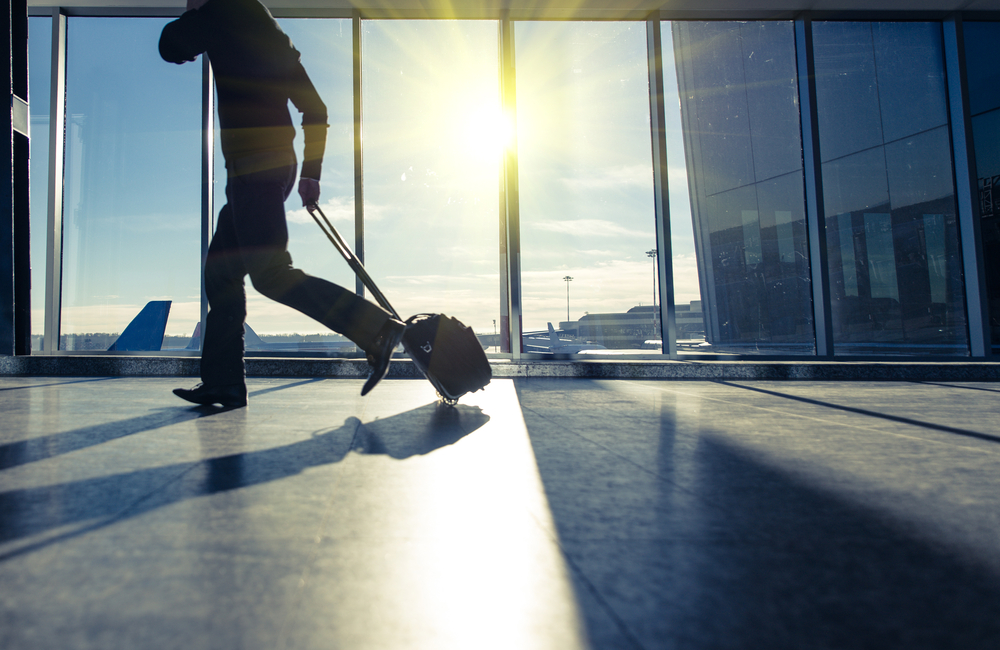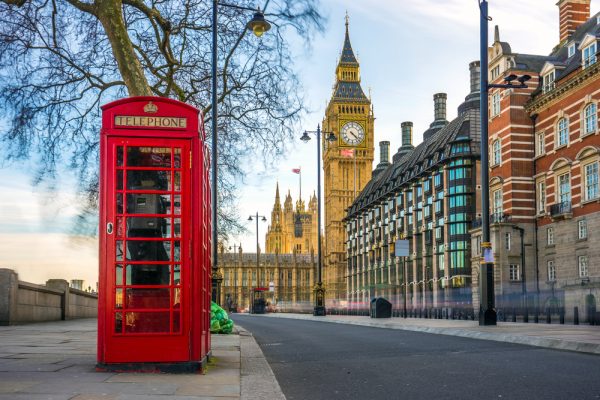How early do you really need to get to the airport?
Signing up for credit cards through partner links earns us a commission. Terms apply to the offers listed on this page. Here’s our full advertising policy: How we make money.
Airlines are pretty clear about how early you should get to the airport: anywhere from 90 minutes to four hours before your departing flight, depending on where you’re going. But how early do you really need to be there? The answer to that question isn’t all that clear-cut and involves several factors.
Here’s what you need to consider for domestic and international travel.

How early to get to the airport for domestic travel
Domestic travel is a bit easier than international travel when deciding what time you should be at the airport. Some airlines recommend arriving two hours before departure. This is at the conservative end of the spectrum, but it may be wise to follow, especially if it’s a high traffic time of year for airlines (such as around the holidays).
No two trips will be the same, but your arrival time will be based on factors such as:
- Whether or not you’re checking a bag
- If you have expedited security
- How big or small the airport is
- How busy the airport is expected to be
You may also want to factor into your arrival time if you’re traveling solo or with others. This would apply especially to traveling with kids as you don’t want to cut it to the point that you’re running to the plane a la Home Alone!
For domestic flights, a safe range to ensure you make your flight is 45 minutes to two hours.
Note that 45 minutes is the absolute latest you can arrive prior to departure if you’re checking a bag. This is the average cutoff time for airlines accepting checked bags. Familiarize yourself with your airline’s checked baggage policies so your checked bag isn’t turned away at the departure counter.
Be forewarned; airlines are sticklers when it comes to the 45-minute rule. My husband just had an occurrence where he was 43 minutes early and the airline would not accept his bag. Thankfully, there were a few other passengers in the same scenario, and the airline reluctantly agreed to run the lot of them to the plane.
If you’re only taking carry-on luggage, you could cut your arrival time shorter as long as you arrive before the boarding door is closed. This varies from 10-15 minutes before departure depending on the airline, but be aware that the gate could be shut even earlier if the pilot decides to make up time.
Printing ticket at the kiosk (+5 minutes)
If you’ve already checked in online or through the airline’s app, then printing your boarding passes or luggage tags at the kiosk is a breeze. It should only take about five minutes with a quick input of your confirmation code and a few questions to answer. Voila! Your tickets and tags will print out. If the kiosk doesn’t work or refuses to print the luggage tags, as in my experience on my last two trips, then you’ll have to just go to the counter.
You could also skip this step entirely if you added the number of checked bags when you checked-in for the flight ahead of time and already have your mobile boarding pass. With nearly every airline offering online check-in through a browser or an app, you should never wait until the day of departure to check-in for your flight at the airport.
If you’re only taking carry-on luggage and have a mobile boarding pass, this will let you bypass the ticketing counters and kiosks all together. You would only need to go to the counter/kiosk if online check-in is unavailable or you want a hard copy boarding pass.
Checking bags (+15 minutes)
Quickly pop into the dedicated lane for bag drop-off. The counter agent will take your bags and put them on the conveyor belt behind the desk.
If you’ve experienced trouble with the kiosk or just would rather check your bags at the counter, you’ll need to stand in line for the next available agent. Depending on if it’s a busy time of day and how many ticketing agents there are, you could be waiting anywhere from a few minutes to an hour. I’ve missed a flight before because of inexplicably stagnant lines at the counter.
Make sure to have your I.D. at the ready once you get to the counter to help speed things along. The ticketing agent will take your I.D., look up the reservation, tag and weigh your luggage, and print your boarding passes if necessary.
Going through airport security (+20 minutes)
Now that your bags are on the way to the plane, airport security is your next hurdle. Normal circumstances should process you through security within 20 minutes (from entering the line to putting your shoes back on). If you’re flying out of a smaller airport, it’s not unreasonable to expect even a fraction of that time. I can get from the airport entrance to my gate in about five minutes with my small home town airport.
Keep reading to find out how to speed up the security process.
Walking to the gate (+10 minutes)
Estimating the time it takes to walk to your gate all depends on the airport itself. It’s best to estimate around ten minutes for walking to your gate, as it’s common for the different terminals to be separated from the main terminal. You may even need to take a bus or a train!
Airline boarding policies (+10 minutes)
In the U.S., most airlines close the boarding door 10 minutes before departure. Some airlines, like American, do it even earlier and close the door 15 minutes before departure. The exact time the door will be closed should be listed on your ticket. Plan your journey through the airport based on when the boarding door closes, not the flight’s posted departure time.
Bottom line
If you were counting, then you noticed we estimate a safe range of arriving 60 minutes before departure. You could be delayed if even one factor throws the whole timeline out of proportion, like an extraordinarily long baggage line or a snaking security line. It’s always better to err on the side of caution than to regret a lack of planning.

How early to get to the airport for international travel
Airlines will often recommend that passengers show up two to four hours before an international flight, depending on the departure airport.
When checking in for an international flight, plan for up to 30 minutes.
Printing ticket at the kiosk (+5 minutes)
Identical to a domestic flight, printing your tickets at a kiosk takes barely any time at all. Just note that not all airlines may have kiosks (especially foreign airlines), so leave time for standing in a line to check your bag and get your boarding passes printed.
Checking bags (+20 minutes)
The line to check bags can be patience building, and it tends to be its lengthiest when you’re in a rush. There tend to be fewer travelers nowadays due to coronavirus, but leaving less than 20 minutes in this fickle line is tempting fate. If you’re jumping on a giant Airbus A380 to Asia, realize that this aircraft is capable of holding more than 800 passengers. And the majority of them could very well be in line with you.
Immigration, passport control (+20 minutes)
Some airports have immigration during your outbound flight. My husband experienced this in Abu Dhabi when returning to the U.S. Check to see if your airport exercises preclearance – and if so, leave a large chunk of time to negotiate this step of security. You may even find Global Entry at select locations outside the U.S., so getting Global Entry could be a huge help to making your flight on time.
My husband was once turned away in Dublin because he arrived 70 minutes early, and Passport Control would not allow anyone later than 75 minutes before their scheduled flight.
Going through airport security (+20 minutes)
Everything is a bit more intense when you’re going international. Leave at least 20 minutes for airport security, as there tend to be more people, and you may not have the luxury of utilizing your TSA PreCheck privileges. Remember TSA Pre is only valid at domestic airports. If you’re at any airport outside the U.S., it will do you no good at all.
Walking to the gate (+20 minutes)
International airport terminals are sometimes a trek from the rest of the airport. Like select domestic airports, you may need a bus or train to get there, which means you’re at the mercy of the mass transit schedule. It should only be a matter of several minutes, but if you cut it close, that could be the dagger in the heart of your would-be vacation.
Airline boarding policies (+20 minutes)
Airline boarding policies have really trifled with my plans when traveling abroad.
As recommended above, plan your journey through the airport based on when your boarding door closes – not the flight’s actual departure time. But also be aware that some international airports have gates that close their doors even before the actual aircraft closes its doors. You may find yourself standing outside the gate watching the plane board!! There’s nothing more frustrating, trust me.
Bottom line
Whatever your method for deciding when to arrive at the airport for domestic flights, be twice as cautious for international flights. They’re usually significantly more expensive, which makes it hurt more if you miss your flight.
Also, be aware that each airport can have extremely unique suggested arrival times based on their security protocols. Tel Aviv, perhaps the most secure and rightfully paranoid airport on earth, suggests you arrive three hours early, while other hubs like Dubai suggest you arrive 90 minutes early. Quite a difference!
Things to consider
How busy is the airport going to be?
Always allow for additional time at ticketing/check-in counters and kiosks around holidays and during severe weather events. Below I’ll go through some of the most common factors to help you determine how busy the airport will be.
The hour of day and day of the week
Your departure time can often affect how busy the airport is going to be when you arrive. If you’re leaving on a 4 a.m. flight on a Tuesday morning, chances are the airport is not going to be as crowded as it would be at 9 a.m. on a Friday morning. This, of course, isn’t a hard and fast rule. But it’s definitely something to consider.
The busiest times for airports tend to be during working hours, so think 8 a.m. to 5 p.m. Weekend dates or Fridays and Mondays are also typically when you can expect larger crowds. This is due to those looking not to take off a lot of work or traveling business folks returning or starting their workweek.
If you’re like me and have a slight case of agoraphobia, you may be looking for the flights during the least crowded time. Typically flights in the early morning or in the evening are nearly a guarantee for a sparsely populated airport. The days sandwiched between Monday and Friday aren’t super popular flying days either.

Month of year
If you plan to travel during the holidays, take extra consideration, and plan accordingly. With an increase in the number of travelers, you could run into more traffic on your way to the airport and longer lines once you arrive. As a rule of thumb, it’s best to arrive:
- 2 hours early for domestic flights
- 3 hours early for international flights
This will give you plenty of time to check your bag (if needed) and make it through security. Plus, a little extra time will go a long way in keeping your anxiety at bay, which is key to a pleasurable travel experience.
Those booking holiday travel should also consider using a credit card that offers travel protections. Unfortunately, delays and cancellations happen and seem even more common during peak travel times (think Thanksgiving, Christmas, etc.). The right credit card can reimburse you for things like trip delays and cancellations and baggage delays, too.
Time after checked bags are no longer accepted
If you need to check luggage, you’ll need to account for the time this will take. To expedite the process, we recommend that you pay for your checked bags online before arriving at the airport. In doing so, you may be able to quickly and easily print out your bag tag from an airline kiosk without having to wait in line or talk to a counter agent (though this option isn’t always available).
The average time before a flight after which airlines no longer accept bags:
- Domestic Flights (within the U.S.): 45 minutes prior to departure
- International Flights (from/to the U.S.): 60 minutes prior to departure
If you miss these windows, you will still be able to make your flight but will not be allowed to check any luggage.
Do you have TSA PreCheck?
If you happen to be behind schedule, having TSA Pre could be a lifesaver for you! Not only does it expedite the security process, but it guarantees you’ll not waste critical moments. The TSA Pre line can be counted on to be shorter and faster than the traditional security line thanks to the lack of clothes shedding and lower volume of enrolled TSA Pre passengers. Read more here about how TSA Pre can save you valuable time at the airport.
Size of the airport
If you’re blessed to live near a small international airport as I do, you can shave minutes off your arrival time just due to the airport’s size and passenger volume. I know I can make it through baggage check and security without any hassle in the fraction of the time it would take me to get through, say, New York or Chicago’s airports. My airport is small, which means it’s a quick walk to the gates, and it services far fewer passengers. If you live near a major hub, though, prepare for a hike and large crowds.
Featured image by aanbetta/Shutterstock.
Editorial Note: We're the Million Mile Secrets team. And we're proud of our content, opinions and analysis, and of our reader's comments. These haven’t been reviewed, approved or endorsed by any of the airlines, hotels, or credit card issuers which we often write about. And that’s just how we like it! :)






Join the Discussion!